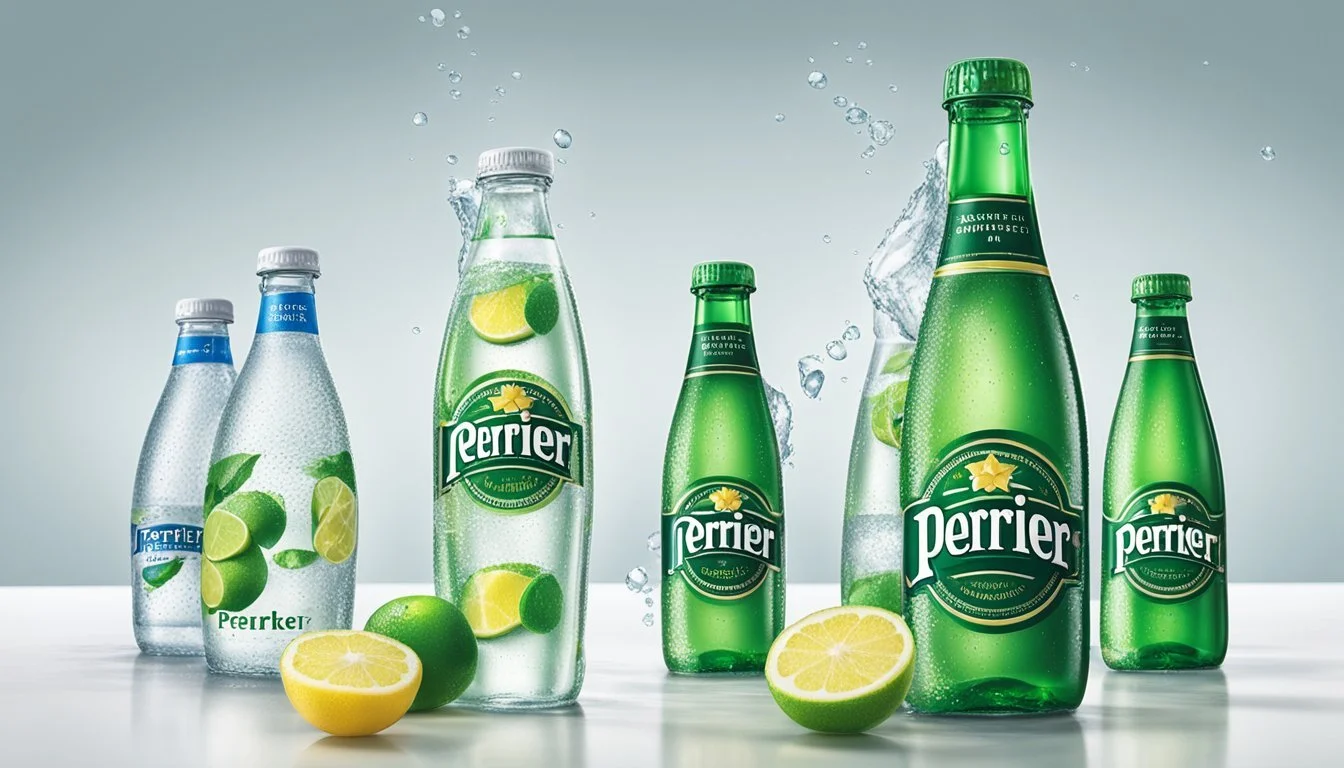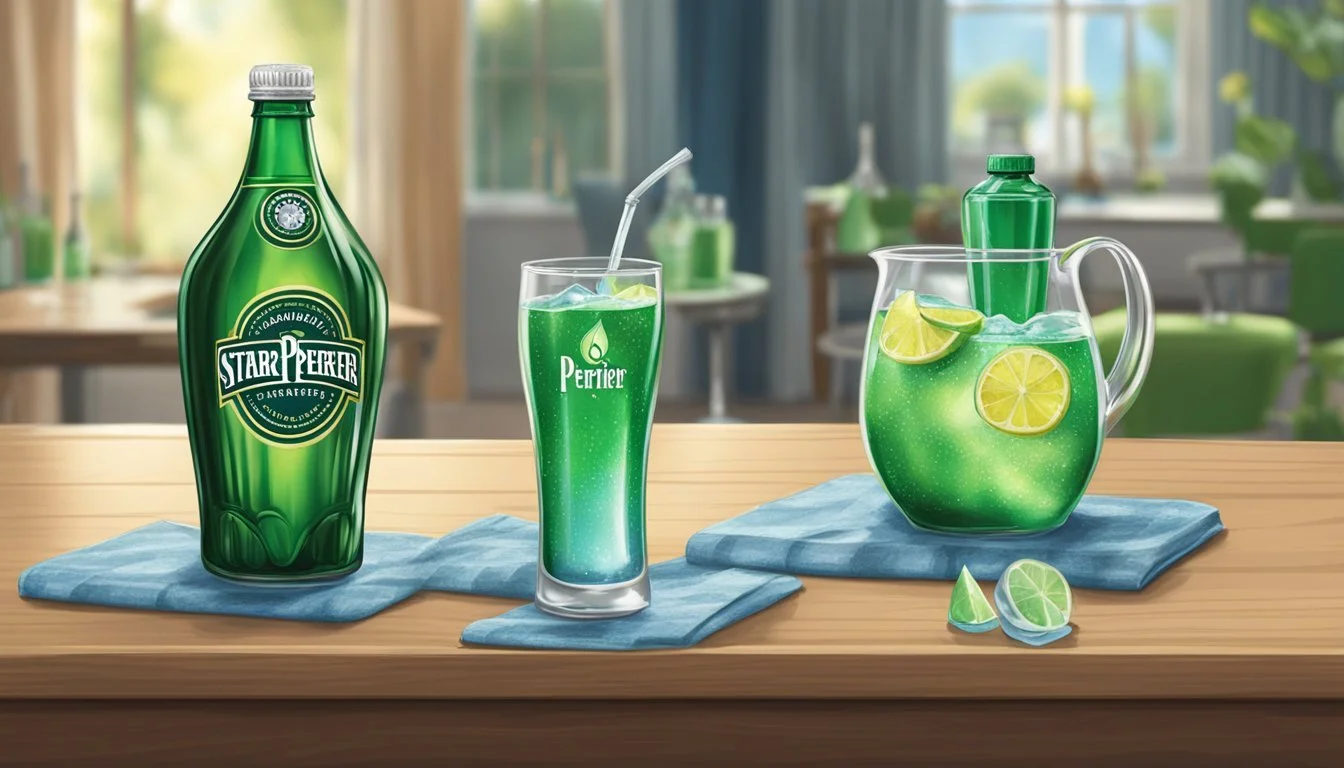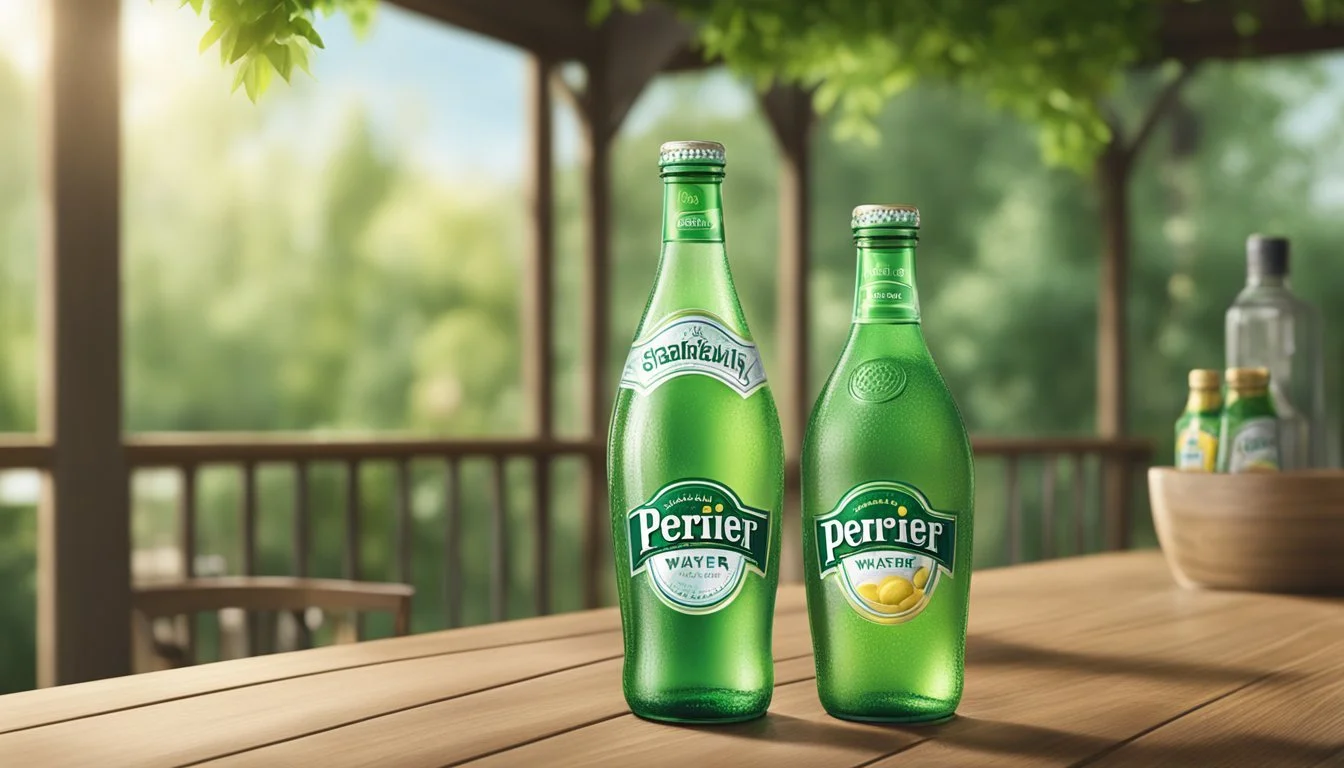Perrier vs. Starkey
Comparing Top Bottled Waters
Choosing between Perrier and Starkey can be challenging. Perrier offers a refreshing, effervescent experience with its naturally carbonated water. Sourced from the Vergèze spring in France, Perrier's distinct taste and iconic green bottle have made it a favorite among sparkling water enthusiasts.
On the other hand, Starkey, sourced from Idaho, is known for its naturally alkaline properties and smooth taste. Bottled at 11,000 feet deep in the earth, Starkey offers a unique, high-quality still water experience that appeals to those who prefer non-carbonated options.
For those who enjoy a lively fizz and a touch of elegance, Perrier might be the preferable choice. Conversely, if a pure, alkaline still water is more appealing, Starkey could be the better option. Both brands are celebrated for their unique qualities, catering to different palates and hydration preferences.
The Essentials of Bottled Water
Bottled water comes in various types, each offering unique characteristics. Mineral water contains minerals such as calcium, magnesium, and potassium, essential for health.
Spring water originates from underground sources, often labeled as natural spring water or mountain spring water. These have a natural taste and sometimes contain minerals.
Purified water undergoes processing to remove impurities. This category includes distilled and deionized water, suitable for people seeking very pure water.
Sparkling water, also known as carbonated water, can be naturally carbonated or artificially infused with CO₂ for fizziness. Examples include brands like Perrier.
Water pH levels affect taste and health benefits. Neutral pH is 7, while anything below is acidic, and anything above is alkaline. Some consumers prefer alkaline water for its potential health benefits.
Electrolytes, such as sodium and potassium, are often added to enhance hydration, especially in flavored or sports beverages. Some waters naturally contain these electrolytes.
Bottled water brands vary greatly in terms of mineral content, origin, and processing. It's essential to read labels to understand the source and composition.
Comparison of a few key factors:
Factor Mineral Water Spring Water Purified Water Sparkling Water Minerals High Variable Low Variable Origin Underground Natural Springs Mixed Natural/Artificial Carbonation Usually None None None Yes pH Level Varies Varies Neutral Varies
Understanding these essentials helps in making informed choices about bottled water preferences and health needs.
Understanding Perrier
Perrier is renowned for its naturally carbonated, sparkling mineral water sourced from France. It offers a unique combination of minerality and effervescence, making it a popular choice among sparkling water enthusiasts.
Brand History and Source
Perrier has its origins dating back to 1863 and is sourced from a natural spring in the Vergèze region of southern France. This region's geological features contribute to the water's unique characteristics. Over the years, Perrier has become synonymous with high-quality sparkling water, largely due to its consistent quality and natural carbonation.
Water Composition and Minerality
Perrier contains a variety of naturally occurring minerals that contribute to its health benefits and distinct taste. Key minerals include:
Calcium
Magnesium
The water is also naturally carbonated, thanks to subterranean carbonation processes involving carbon dioxide from ancient volcanic activity. The presence of these minerals and natural carbonation distinguishes Perrier from many other bottled waters.
Flavor Profile and Carbonation
Perrier's flavor profile is crisp and refreshing, partly due to its minerality and carbonation. Unlike artificially carbonated waters, Perrier's bubbles are fine and persistent, providing a consistent and enjoyable effervescent experience. The water's taste is often described as clean with a slight mineral undertone, making it an excellent pairing for various dishes and a refreshing option on its own.
Exploring Starkey
Starkey, a natural water brand from Idaho known for its unique taste and mineral content, offers a distinctive drinking experience. The detailed analysis below delves into its origins, mineral composition, and sensory characteristics.
Brand Overview and Origin
Starkey is sourced from geothermal springs in the mountains of Idaho. This brand prides itself on providing natural, mineral-rich water direct from the earth. Starkey water is extracted from a deep well, tapping into a geothermal aquifer that ensures its purity and mineral integrity. The natural filtration process allows Starkey to maintain a clean and fresh taste that is uncompromised by artificial additives. Founded with a commitment to delivering high-quality water, Starkey has garnered attention for its unique sourcing and production methods.
Mineral Content Analysis
Starkey water stands out due to its notable mineral profile. Key minerals found in Starkey include calcium, magnesium, silica, sodium, and potassium. This combination contributes to the water's overall balance and health benefits:
Calcium: Important for bone health and metabolic functions.
Magnesium: Contributes to muscle function and a stable pH balance.
Sodium: Preserved at moderate levels to maintain hydration.
Potassium: Essential for heart and muscle functions.
Silica: Known for promoting skin health and joint function.
The pH level of Starkey is slightly alkaline, typically around 9.6, which is considered beneficial for neutralizing acidity in the body.
Taste and Texture Distinctions
Starkey's taste is often described as rich and multi-layered, setting it apart from other bottled waters. The high mineral content, particularly the presence of silica and magnesium, lends the water a slightly thick texture that can feel smooth and satisfying on the palate. Some drinkers find this savory nuance appealing, while others might need time to acclimate to its unique flavor profile.
Unlike more neutral-tasting waters, Starkey offers a robust taste experience that can be both refreshing and complex. The subtle notes of minerals contribute to a lingering aftertaste, making Starkey a polarizing choice among water enthusiasts.
Health and Safety Considerations
When comparing Perrier and Starkey bottled waters, it is important to consider the key factors of pH levels, mineral content, and the bottling processes. These aspects can directly affect health and safety.
PH Levels and Human Health
The pH level of water can influence its taste and how it interacts with the body. Perrier typically has a pH around 5.5, making it slightly acidic. Starkey, on the other hand, ranges around 7.7, which is more alkaline.
Slightly acidic water like Perrier may contribute to dental erosion if consumed in large quantities over time. Alkaline water, like Starkey, is often marketed for its potential health benefits, such as neutralizing acid in the body.
Mineral Benefits and Risks
Different mineral compositions can also affect water safety and health benefits. Perrier is known for its high calcium and magnesium content. It contains about 150 mg/L of calcium and 3.9 mg/L of magnesium, which can be beneficial for bone health and muscle function.
Starkey water, sourced from geothermal springs, has traces of various minerals, including calcium, magnesium, and sodium. Both waters are generally low in heavy metals, complying with safety standards.
It's important to note that excessive consumption of minerals like sodium and calcium may have adverse effects for individuals with specific health conditions, such as hypertension or kidney issues.
Bottling Process and Purity
The bottling process ensures the purity and safety of the water. Perrier employs a rigorous filtration system to maintain its mineral-rich profile while ensuring the removal of contaminants.
Starkey water is sourced from geothermal springs and undergoes minimal processing to preserve its natural qualities. Both brands regularly test for contaminants like lead and other heavy metals.
Consumer Reports has found that both brands adhere to safety standards. However, occasional findings of microplastics are a concern across the bottled water industry. Ensuring regular quality tests can aid in maintaining high safety standards.
Environmental Impact and Sustainability
When comparing Perrier and Starkey, key factors to consider include water sourcing, packaging, recyclability, and carbon footprint. Each brand’s practices highlight different approaches to environmental responsibility.
Water Sourcing and Ecosystems
Perrier sources its water from natural springs in France, particularly from the Vergèze spring near Nîmes. This spring’s water is naturally carbonated and has been a crucial element in defining Perrier's distinct taste.
Starkey Water is sourced from a natural spring in the mountain valley of Idaho. This source is renowned for its purity and mineral content, which does not require extensive filtration processes. Both brands emphasize careful management of their water sources to maintain ecosystem health.
Packaging and Recyclability
Perrier offers its sparkling water in both glass and PET plastic bottles. This variety allows for wider consumer choice and recycling options. Glass bottles have a higher recyclability rate and are considered more environmentally friendly compared to plastic.
Starkey Water, primarily available in PET plastic bottles, is striving to improve recyclability rates. Efforts include using recyclable materials and encouraging consumer recycling. Nonetheless, the effectiveness of these initiatives largely depends on local recycling systems and consumer participation.
Carbon Footprint of Sparkling Waters
Perrier's production processes generate a measurable carbon footprint, primarily due to transportation and carbonation processes. The use of glass bottles, though beneficial in terms of recyclability, also incurs higher energy costs during production and transport due to their weight.
Starkey Water's carbon footprint includes factors such as bottle production, transport from its mountain valley source, and packaging. PET bottles, while lighter and cheaper to transport, contribute to CO2 emissions to a significant extent when not effectively recycled. Both companies aim to implement practices to minimize these emissions and promote a more sustainable future.
Market Comparison and Alternatives
The landscape for bottled water includes various brands competing based on quality, price, and consumer preferences. This analysis will look at how Perrier and Starkey perform against their competitors, their pricing, and overall market trends.
Competing Brands and Products
Perrier and Starkey face competition from numerous well-known brands such as Dasani, Evian, Aquafina, Fiji Water, Poland Spring, Smartwater, San Pellegrino, La Croix, Icelandic Glacial, Topo Chico, and Voss.
Perrier is categorized as a sparkling mineral water, often competing with brands like San Pellegrino and Topo Chico.
Starkey, known for its unique mineral content and natural spring source, squares off against premium still water offerings like Fiji Water and Icelandic Glacial.
Pricing and Affordability
Perrier and Starkey's pricing varies notably. Perrier, marketing itself as a sophisticated choice, has a higher price point similar to San Pellegrino and Topo Chico.
Starkey is also positioned as a premium brand, usually priced higher than standard bottled waters like Dasani and Aquafina.
A typical 750ml bottle of Perrier might cost around $1.50-$2.50, while Starkey's 1-liter bottle ranges from $2.50 to $4.00. In contrast, brands like Dasani and Aquafina often price their 16.9 oz bottles at approximately $1.00-$1.50.
Consumer Preferences and Trends
Consumer preferences show a tilt towards brands that emphasize quality, natural sourcing, and health benefits. Perrier's sparkling mineral profile attracts those who appreciate its distinctive taste and carbonation, often linked with an active and health-conscious lifestyle.
Starkey appeals to consumers looking for naturally high mineral content and those who value organic or natural products.
Consumers are increasingly willing to pay a premium for brands viewed as offering superior quality or unique attributes. The growth in sparkling water, partially driven by health trends, benefits brands like Perrier and La Croix.
In summary, the market for bottled water is diverse, with brands like Perrier and Starkey holding strong positions based on their unique characteristics, premium pricing, and alignment with consumer trends favoring health and quality.
Conclusion
Evaluating Perrier and Starkey involves considering several aspects of bottled water quality and branding.
Quality and Source
Perrier: Known for its distinctive carbonation and mineral content, sourced from natural springs in Vergèze, France.
Starkey: Bottled from a geothermal spring in Idaho, offers a smooth, less carbonated experience.
Taste and Composition
Perrier: Crisp and effervescent, appealing to those who enjoy a strong, sparkling sensation.
Starkey: Mildly mineralized, providing a more subtle taste suitable for everyday consumption.
Brand Appeal
Perrier: Emphasizes sophistication and history, marked by a long-standing reputation.
Starkey: Focuses on the purity and natural origins of its water, appealing to health-conscious consumers.
Price and Availability
Perrier: Widely available and often priced higher due to its premium image.
Starkey: May be harder to find and can be similarly priced, but often marketed towards niche markets.
In summary, choosing between Perrier and Starkey depends on individual preferences for taste, carbonation, and the perceived value of brand attributes. Each offers distinct qualities that cater to different palates and lifestyles.
More About Perrier
Icelandic Glacial vs Perrier: Which Bottled Water is Better?
Mountain Valley Spring Water vs Perrier: Which Bottled Water is Better?
Perrier vs Kirkland Signature: Which Bottled Water is Better?
Perrier vs Richard's Rainwater: Which Bottled Water is Better?
Perrier vs Whole Foods Italian Still Mineral water: Which Bottled Water is Better?
More About Starkey
Icelandic Glacial vs Starkey: Which Bottled Water is Better?
Mountain Valley Spring Water vs Starkey: Which Bottled Water is Better?
Starkey vs Kirkland Signature: Which Bottled Water is Better?
Starkey vs Richard's Rainwater: Which Bottled Water is Better?
Starkey vs Whole Foods Italian Still Mineral water: Which Bottled Water is Better?







